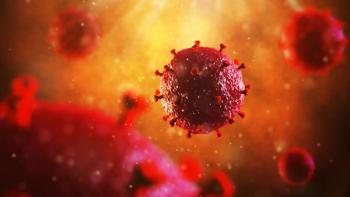
Men with HIV Take Testosterone at High Rates
HIV-infected men appear to be using testosterone replacement without adequate baseline evaluation and establishment of recommended indications.
Men infected with the HIV initiate testosterone replacement therapy at high rates, potentially without baseline testosterone deficiency or recommended post-treatment monitoring, according to a large, multicenter cohort study.
“HIV is associated with testosterone deficiency in up to 70% of men, a finding that persists despite successful antiretroviral therapy (ART). Hypogonadism is expected to increase, as this population continues to age. Yet, little is known about testosterone replacement therapy among HIV-infected men,” state the authors, led by Ramona Bhatia, MD, Institute for Public Health and Medicine, Northwestern University Feinberg School of Medicine, in Chicago, IL.
The researchers studied HIV-infected men seen at The Centers for AIDS Research Network of Integrated Clinical Systems clinical sites in which testosterone replacement therapy data were available from 1996 to 2011. The study included nearly 14,500 men without evidence of testosterone replacement therapy with more than 75,000 person-years of follow-up time. Testosterone replacement therapy was initiated in 1,482 (10%) men at a median age of 44 years.
A testosterone replacement therapy initiation rate of 19.7/1000 person-years was calculated. This rate “was over 2.5 times higher than that reported from insurance claims for US adult men in 2011 (7.57/1000 person-years),” they state.
A multivariable analysis found testosterone replacement therapy initiation was independently associated with age at least 35 years, white race, diagnosis of AIDS wasting, hepatitis C co-infection, protease inhibitor-based ART, and nadir CD4+ cell count of 200 cells/μl or less.
Only two-thirds of the men prescribed testosterone replacement therapy had their serum total testosterone level measured beforehand. Testosterone deficiency was found in one-quarter of them, which is similar to rates from the general population. Only one-third of men over age 40, for whom pre-testosterone replacement therapy PSA levels are recommended, underwent PSA testing.
“These data suggest that testosterone replacement therapy may be commonly administered to HIV-infected men without adequate baseline laboratory evaluation and establishment of recommended indications,” they state.
The researchers suggest several reasons for higher testosterone replacement therapy initiation rates among HIV-infected men. The symptoms of hypogonadism, including fatigue, psychosexual dysfunction, and erectile dysfunction, occur more commonly in HIV-infected men and may prompt testosterone replacement therapy. Also, protease inhibitor use was associated with testosterone replacement therapy.
“Older protease inhibitor-based ART is implicated in lipodystrophy and fat redistribution. Body morphologic changes associated with lipodystrophy can be similar to those of testosterone deficiency and may lead to testosterone replacement therapy,” they state, noting that protease inhibitors may also enhance peripheral conversion of testosterone to estradiol, resulting in symptoms of hypogonadism.
In addition, they found inadequate post-testosterone replacement therapy monitoring. Guidelines recommend monitoring serum testosterone levels 3–6 months after initiating testosterone replacement therapy, yet “these measurements were lacking in 39% and obtained within the first 6 months in only 25% of men,” they state.
Overuse of testosterone replacement therapy can increase the risks of erythrocytosis, metastatic prostate cancer, reduced sperm production, and infertility, they note, and has been associated with myocardial infarction in those with preexisting cardiovascular disease, which may be conferred by HIV infection itself.
The researchers published their
Newsletter
Enhance your clinical practice with the Patient Care newsletter, offering the latest evidence-based guidelines, diagnostic insights, and treatment strategies for primary care physicians.
















































































































































































































































































